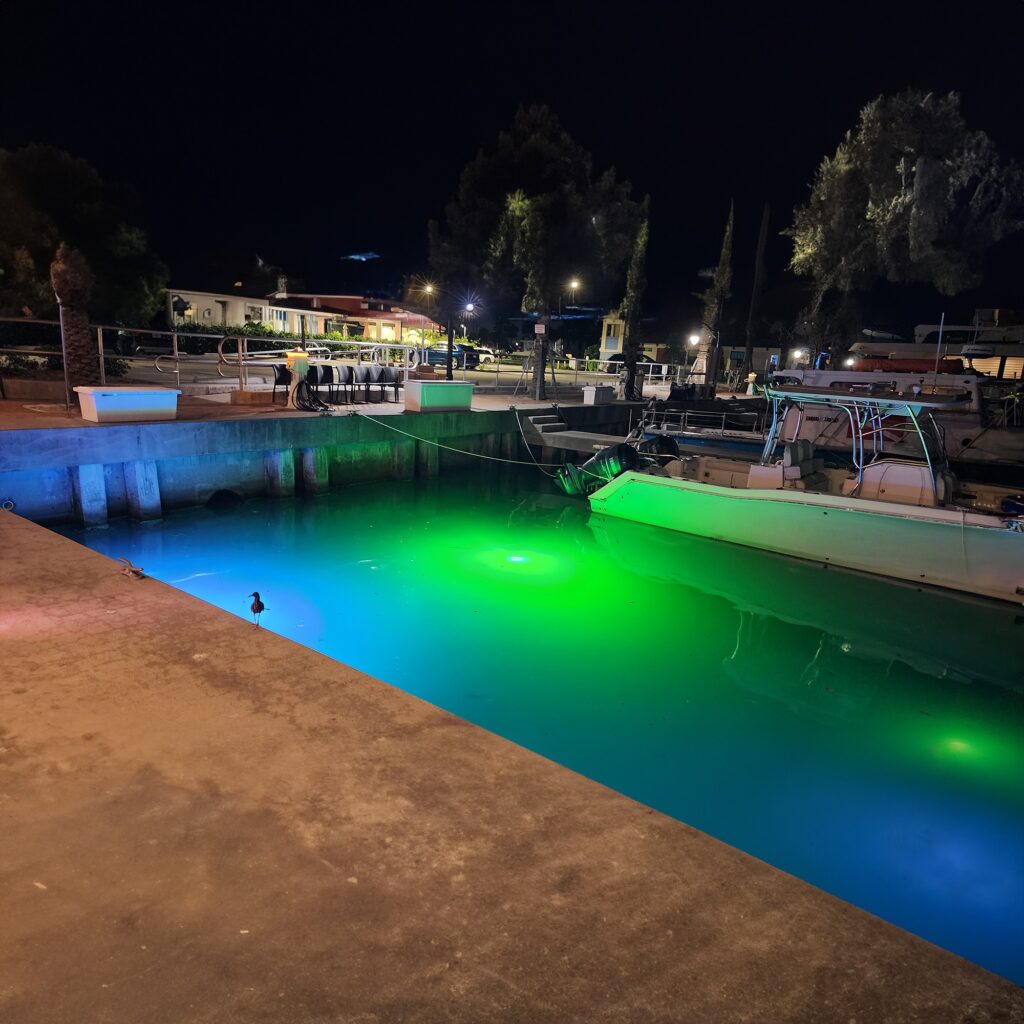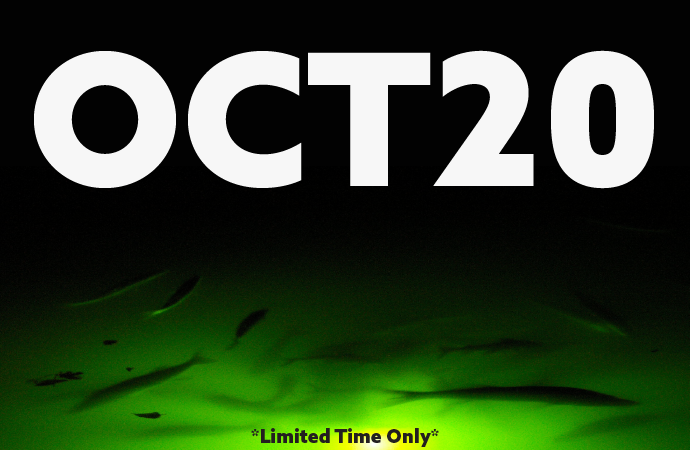Which FIsh Light is Better; HID or LED?

When comparing LED and HID fish lights, there are many important factors to consider to ensure you choose the best option for your dock. Fish lights play a significant role in attracting marine life, creating a captivating underwater display, and enhancing your overall dock experience. The differences between LED and HID lights can affect their performance, maintenance needs, and long-term reliability. Let’s delve into the advantages and disadvantages of each type.
LED Fish Lights
Some fish light companies utilize LED lights for their dock systems. LEDs are well-known for their energy efficiency and relatively bright output compared to the lights we use in our daily lives. However, they often fall short when it comes to the specific demands of dock lighting. While LEDs may seem bright in other applications, they are not always powerful enough to illuminate large underwater areas effectively. For those looking to light up an expansive space around their dock, LEDs might not meet expectations.
A major limitation of LED lights is their inability to self-clean. Unlike HID lights, LED lights do not produce heat. This lack of heat generation can lead to the accumulation of aquatic growth, such as algae and barnacles, on the light’s surface. Over time, this buildup can reduce the brightness of the light and eventually render it useless if not cleaned manually. Without a self-cleaning mechanism, LED lights require regular maintenance, which can be both time-consuming and inconvenient for dock owners. These two drawbacks—limited brightness and the inability to self-clean—make LED lights less ideal for long-term dock lighting solutions.
HID Fish Lights
HID (High-Intensity Discharge) lights, on the other hand, are widely regarded as the superior option for permanent dock installations. These lights are not only significantly brighter than LEDs—over 300% brighter, in fact—but also offer features that make them easier to maintain and more effective for dock lighting.
One of the most significant advantages of HID lights is their self-cleaning ability. These bulbs produce enough heat to burn off aquatic growth, such as algae and barnacles, that might otherwise accumulate on the light. This heat prevents buildup and ensures that the lights remain clear and functional, even after extended periods underwater. As a result, HID lights require minimal maintenance compared to their LED counterparts.
High-quality HID fish lights are typically equipped with a photocell, a device that automatically turns the light on at dusk and off at dawn. This feature serves two important purposes. First, it ensures that the light operates consistently every night, keeping the bulb clean and free from growth. Second, it establishes a feeding cycle for fish. By turning on at the same time each night, the light attracts fish to the dock, where they learn to associate the light with a reliable food source. This routine encourages fish to return nightly, creating a vibrant underwater ecosystem by your dock.
Understanding Lumens and Misleading Claims
When comparing fish lights, it’s essential to pay close attention to the technical specifications provided by manufacturers, particularly the lumens—a measure of brightness. Unfortunately, some companies make exaggerated claims about the lumens their lights produce. For instance, a company might claim that a 175-watt bulb emits 22,000 lumens, which is simply not accurate. The reality is that a 175-watt HID bulb produces 9,000 lumens, and a 250-watt HID bulb emits 14,500 lumens. These numbers are consistent across all manufacturers, regardless of marketing claims.
The reason these false claims are rarely challenged is that the equipment required to measure lumens is prohibitively expensive for the average consumer. As a result, customers must rely on manufacturers’ honesty when evaluating product specifications. To avoid being misled, focus on the wattage of the light rather than exaggerated lumen claims. Wattage is a reliable indicator of a light’s brightness, and understanding the standard outputs for HID lights can help you make informed decisions.
Other Factors to Consider
In addition to brightness and self-cleaning capabilities, there are other components of fish lights that you should evaluate when comparing products. For example, the quality of the wiring is critical for safety and durability. Some companies cut corners by using simple extension cords in their systems, which is not only substandard but also illegal. High-quality fish lights use UL-approved, underwater-rated wiring that meets safety standards and ensures reliable operation.
Warranty is another important consideration. Many companies offer only a one-year warranty on their products, while others provide three-year warranties. A longer warranty indicates greater confidence in the product’s durability and performance, offering you better peace of mind as a customer.
When choosing between LED and HID fish lights, it’s clear that HID lights offer significant advantages for dock lighting. Their superior brightness, self-cleaning capabilities, and ability to establish a consistent feeding cycle for fish make them the best option for permanent installations. However, it’s equally important to scrutinize manufacturers’ claims about lumens and ensure that the lights you purchase are built with high-quality components and come with a solid warranty. By doing so, you’ll invest in a lighting system that is not only effective but also long-lasting and reliable. Don’t be swayed by exaggerated marketing claims—focus on the features that truly matter for your dock lighting needs.




